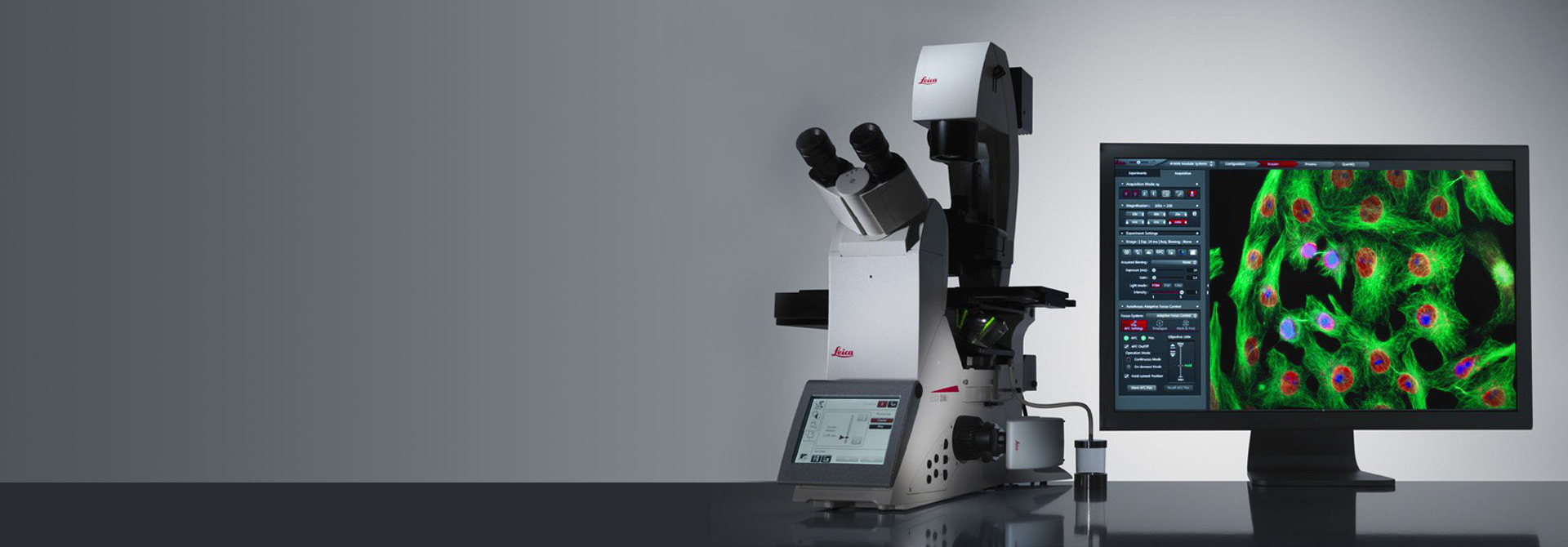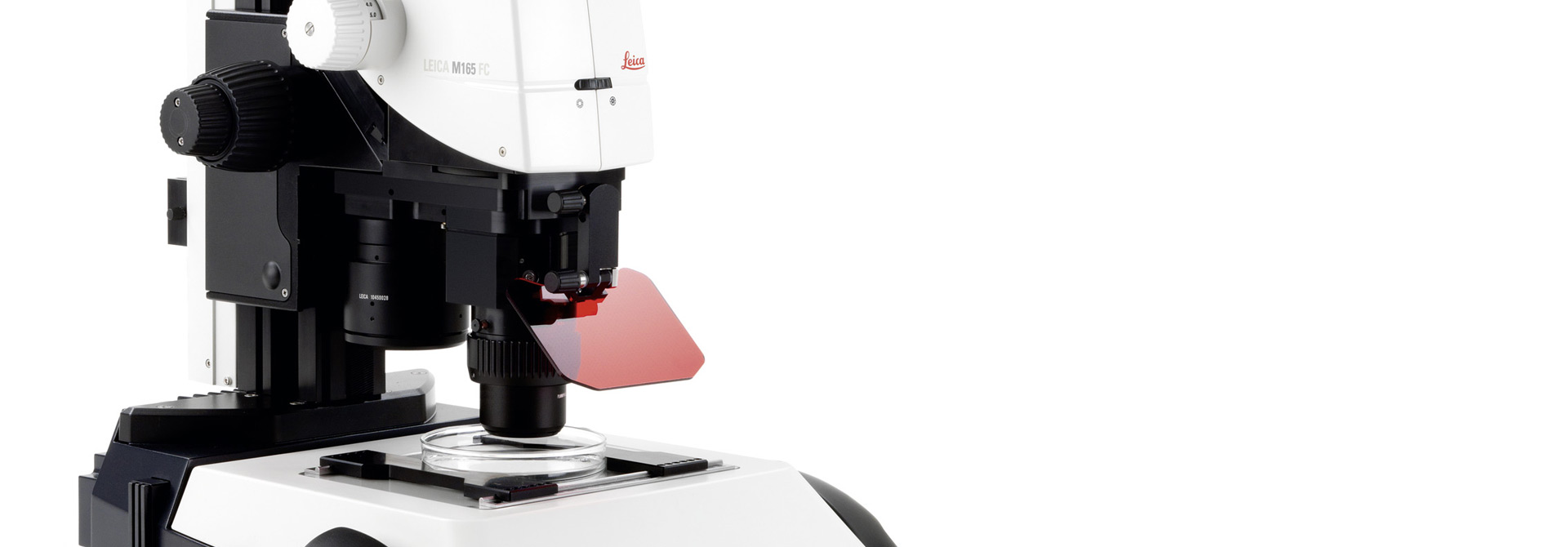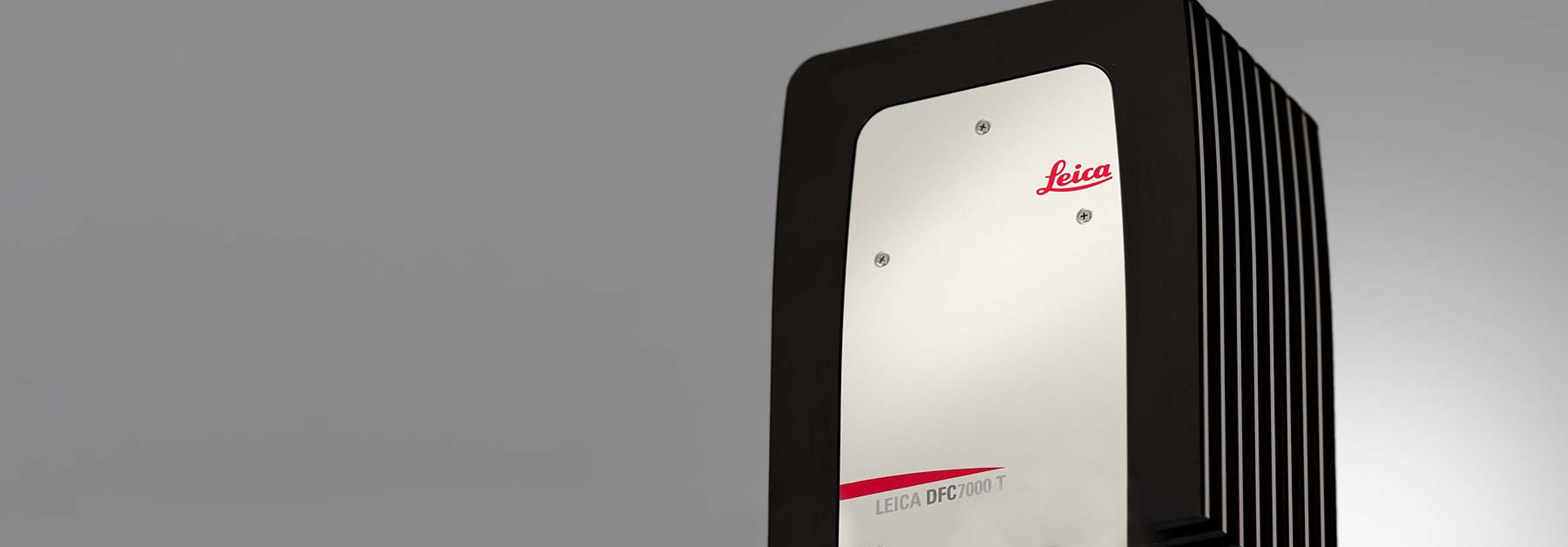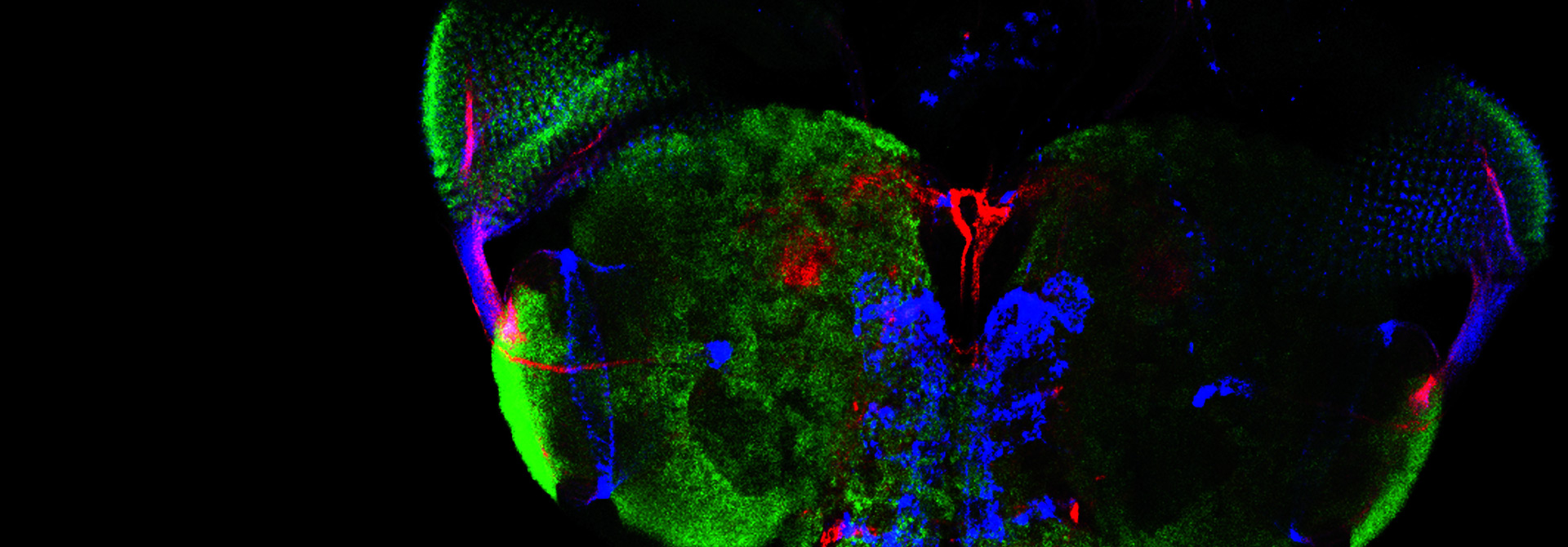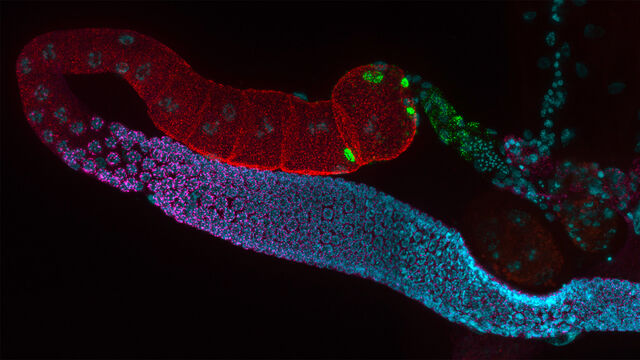
Fluorescence
Fluorescence
Fluorescence Light Microscopes
Commonly, Fluorescence microscopes used in research applications are based on a set of optical filters:
- an excitation filter,
- a dichroic beam splitter, and
- an emission filter.
The excitation filter selects the wavelengths to excite a particular dye within the specimen, the emission filter serves as a kind of quality control by letting only the wavelengths of interest emitted by the fluorophore pass through. The dichroic mirror's purpose is to reflect light in the excitation band and transmit light in the emission band, enabling the classic epifluorescence incident light illumination.
Fluorescence Stereo Microscopes
Leica Microsystems’ fluorescence stereo microscopes use TripleBeam technology, a separate (third) beam path for fluorescence illumination of the sample without a dichroic mirror.
Therefore, one excitation filter for the illumination beam path and two emission filters, one for each observation beam path, are needed.
Cameras for fluorescence microscopy
To obtain high quality fluorescence images, it is necessary to use an appropriate CCD or sCMOS fluorescence camera.
Leica Microsystems offers dedicated fluorescence cameras for different applications.
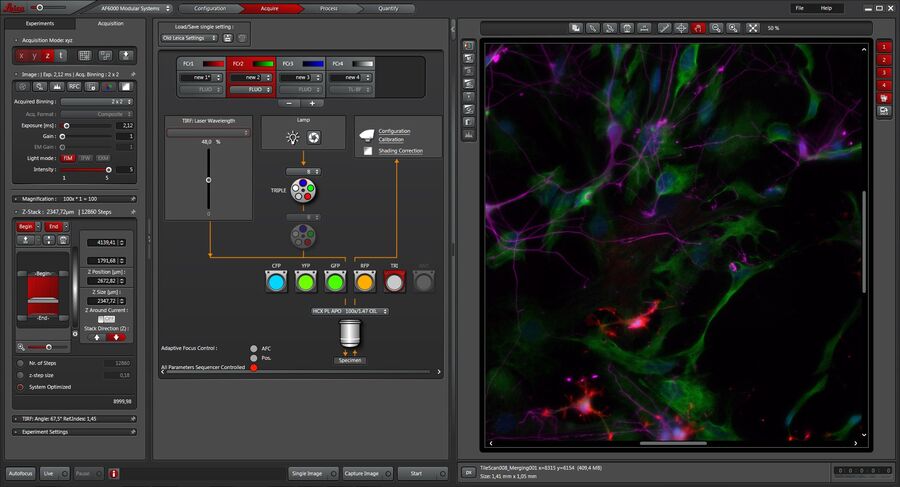
Software for fluorescence microscopy
A straightforward setup and control of experiments is fast becoming more and more important in fluorescence microscopy.
The dedicated Leica Application Suite (LAS) X software platform facilitates the setup of even complex experiments.
From the setup to the analysis of the imaging data, LAS X is the perfect software platform.
About Fluorescence Microscopy
Fluorescence microscopy has become the most important physical phenomenon in modern biology and medicine.
After a slow start, the possibility of specific fluorescence staining boosted this application in the early 1930's. Around 1950 a second stage was ignited with the invention of immunofluorescent staining.
Functional imaging, most prominently by Ca2+ probes, delivered the method from the restraint to stick to morphological and structural imaging. The possibility to create living material with targeted expressible fluorescent proteins revolutionized fluorescence microscopy in an unexpected and extensive third stage.
Currently, new methods that use specific fluorescent protein-features, are popping up weekly. And, last but not least, all modes of super-resolution imaging are based on fluorescence.
Interested to know more?
Talk to our experts.
Do you prefer personal consulting? Show local contacts
